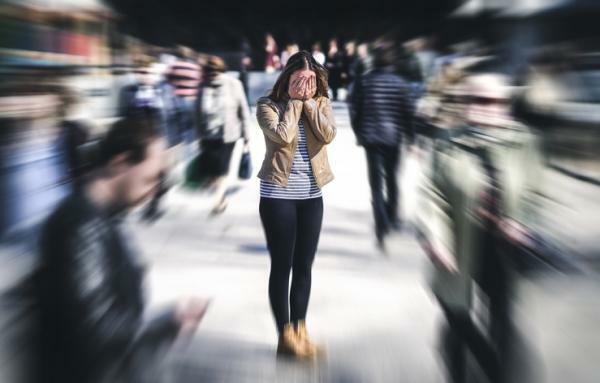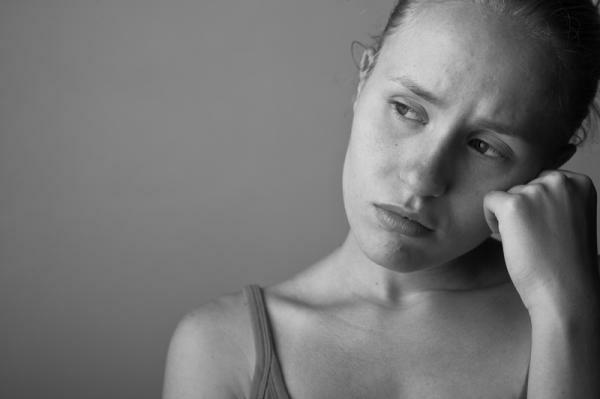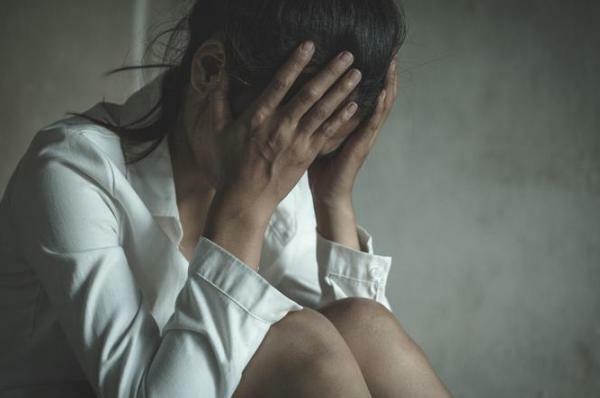
One of the most common psychological disorders in the general population are phobic disorders. Many phobias are similar to each other and what differentiates them is the precipitating phobic stimulus. In the case of enoclophobia, the anxiety triggers are the spaces in which a multitude of people can gather. Faced with these situations, people who suffer fear of crowds, suffer a very intense, irrational fear and high discomfort and anxiety, which leads them to avoid the circumstances that lead to these situations. Therefore, people with this disorder will try to avoid busy places such as demonstrations, concerts or large shopping centers.
However, phobias are a very common disorder and the therapeutic plan that is established against them has repeatedly empirically demonstrated its effectiveness. To learn more about enoclophobia, in this Psychology-Online article we will explain the fear of the crowd or enoclophobia: symptoms, causes and treatment.
Index
- What are phobias?
- What is enoclophobia?
- Comparison between enoclophobia, social phobia and agoraphobia
- Symptoms of enoclophobia or fear of crowds
- Causes of enoclophobia or fear of crowds
- Treatment of enoclophobia or fear of crowds
What are phobias?
Phobias or phobic disorders are guided by two characteristic features:
- Fear or anxiety they are experienced exclusively in very specific circumstances (in the presence of certain objects, activities, situations, ...), far from which the person is safe, well. However, he feels a constant fear to be able to meet again those circumstances.
- The person makes a great systematic and conscious effort to avoid circumstances that he has associated as causing anxiety.
What is enoclophobia?
Enclophobia is the fear of the crowd. Fear of the crowd is part of the so-called simple or specific phobias. The main characteristic of this disorder is a irrational and persistent fear of being present in spaces where many people are and, faced with this, the person seeks to avoid these spaces. In these situations, the person can react with very high levels of anxiety and reproducing a determined symptomatology, being aware of the irrationality of fear in proportion to the danger that said element can behave. We can find ourselves facing many simple or specific phobias, but they all share the same structure and origin. Here you can see interesting information about the 15 most common phobias.
Comparison between enoclophobia, social phobia and agoraphobia.
When we talk about enoclophobia or fear of crowds, it is necessary to clarify some definitions in order to make a correct diagnosis differentiate. Below we see the differences between enoclophobia, social phobia and agoraphobia.
Difference between social phobia and enoclophobia
We should not confuse the so-called social phobia with fear of the crowd. In the first place, social phobia is itself a psychopathological anxiety disorder, on the contrary, fear of the crowd is part of the so-called specific phobias. The main component that distinguishes the two phobias is that in social phobia the person fears being evaluated, humiliated or embarrassed by the people around her, who are not part of her family environment. The fear of evaluation can be present in situations where there are many or few people. In contrast, in crowd phobia the main characteristic is fear of large crowds in Yes, in social phobia it is not necessary that there are many people to be afraid or intensify the anxiety. Some examples that we can describe of social phobia could be: fear of speaking or acting in public, using public toilets, eating or writing in front of people.
Difference between agoraphobia and enochlophobia
It is also necessary to distinguish enoclophobia from agoraphobia. The main difference between enoclophobia and agoraphobia is that in the last one fear the same anxiety symptoms, places where it is difficult to escape or get help if you feel anxiety and the anxiety attacks themselves. They agree that it is possible that a difficult-to-escape situation may be a place where there is an agglomeration of people, but the perspectives are different. If you feel identified with these symptoms, you can perform the agoraphobia test.
Symptoms of enoclophobia or fear of crowds.
The symptomatology presented in the face of a specific phobia is independent of the phobic stimulus, that is, a person who has a Specific phobia, such as claustrophobia, will respond with the same symptoms as a person with fear of the crowd. So, although the phobic stimulus may be different in the different forms of presentation of the simple phobia, the reaction to said stimulus will be the same or similar.
According to the DSM-V, the symptoms associated with enochlophobia are the following:
- Presence of a intense fear or anxiety by a specific triggering stimulus.
- The phobic object or situation almost always causes a immediate fear or anxiety reaction.
- The person seeks with all his effort avoid or resist actively object or situation.
- The fear or anxiety presented generates a disproportionate response to the real danger that the trigger represents.
- The presence of fear and anxiety are persistent, usually lasting six or more months.
- It generates a clinically significant discomfort, as well as a social, occupational deterioration and in other areas of the person's life.
Faced with the presence of a simple phobia, the typology must be specified according to the phobic stimulus: animal, natural environment, fear of blood-injections, situational,... In this case, we would be faced with a situational phobia to crowded spaces of people.
In a situation with a large crowd, the person who is afraid of the crowd could react with a panic attack. The symptoms presented in the panic attack, according to the DSM-V, are the following:
- Palpitations, pounding of the heart, or racing heart rate.
- Sweating
- Shaking or shaking.
- Feeling of shortness of breath or suffocation.
- Feeling of suffocation
- Pain or discomfort in the chest.
- Nausea or abdominal discomfort.
- Feeling dizzy, unsteady, light-headed, or fainting.
- Chills or feeling hot
- Paresthesias: feeling of numbness or tingling.
- Derealization: feeling of unreality.
- Depersonalization: feeling of detaching from oneself.
- Fear of losing control or "going crazy."
- Affraid to die.

Causes of enoclophobia or fear of crowds.
The causes of specific phobia, explained from a behavioral perspective, are associated with experience of trauma, where the person seeks to avoid the seemingly insignificant circumstance, because his thought has associated said element (place, situation, object ...) to a lived experience that caused pain or afraid.
Cognitive orientation adds that from this traumatic experience that has been associated with a specific element, the person establishes a set of irrational mental contents, which revolve around the phobic object, attributing irrational meanings to them.
Faced with this, the therapy that has been most effective against phobic disorders has been cognitive-behavioral therapy, which works on these causal hypotheses.
Treatment of enoclophobia or fear of crowds.
Faced with the causality associated with phobic disorder, the treatment that has been most effective in improving phobic symptoms is cognitive behavioral therapy.
The main intervention in cognitive-behavioral orientation is exposure technique, being the most used and validated in its effectiveness. The intervention consists of positioning the person to a gradual exposure of the feared situation, with the aim that the person The patient may be progressively exposed to the phobic object or situation that causes the high levels of anxiety and afraid. As it is a gradual exposure, they must be established in hierarchies from least to greatest impact, so that the person will be exposed first to the situations or associated objects that provoke a lower fear and the exposure to more situations will increase. feared. The exposure grading can be reproduced "in vivo" or in imagination. However, the "in vivo" technique is considered to be more efficient. After determining how the presentation will be carried out, the list of hierarchies towards the feared object or situation is established with the therapist. Gradually, the person will be exposed to each feared stimulus of this hierarchy, not being able to advance to the next step until the anxiety caused by the previous hierarchy is not normalized.
It is highly recommended to use relaxation techniques between each hierarchy jump, such as the Jacobson's progressive muscle relaxation, since the anxiety levels of the person who is exposed will increase considerably. Relaxation will help you return to your normal state.
In addition to this, they tend to perform cognitive exercises, in order to modify the irrational thoughts associated with the fear caused by the phobic stimulus. For this, the cognitive restructuring technique, which has the objective of transforming automatic and irrational thoughts into thoughts that are more in agreement with reality.
On many occasions, the drug prescription, in order to reduce the anxiety symptoms presented, to be able to work with the cognitive (irrational thoughts) and behavioral components (avoidance behaviors). The drugs used for its treatment can be from the family of antidepressants and anxiolytics.
This article is merely informative, in Psychology-Online we do not have the power to make a diagnosis or recommend a treatment. We invite you to go to a psychologist to treat your particular case.
If you want to read more articles similar to Fear of the crowd or enoclophobia: symptoms, causes and treatment, we recommend that you enter our category of Clinical psychology.
Bibliography
- Beck, A., Emery, G & Greenberg, R. (2014). Anxiety Disorders and Phobias: A Cognitive Perspective. Bilbao: Desclée de Brouwer.
- American Psychiatric Association. (2014). DSM-5. Diagnostic and Statistical Manual of Mental Disorders. Barcelona: Masson.
- Sassaroli, S & Lorenzini, R. (2000). Fears and phobias: causes, characteristics and therapies. Barcelona: Paidós.


